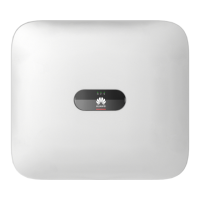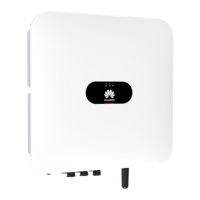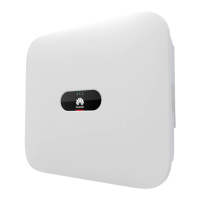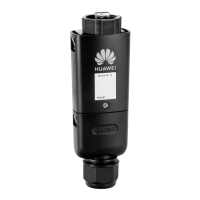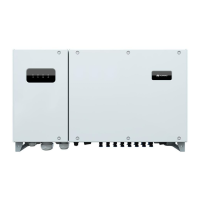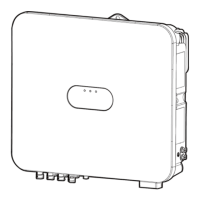LUNA2000-200KWH-2H1 Smart String ESS
User Manual
Copyright © Huawei Technologies Co., Ltd.
ESS (Excluding Battery Packs) Storage
Do not unpack the ESS if it will be stored for a long time.
The ESSs cannot be stacked.
The ground surface is flat (long-term or temporary storage).
The cabinet door is closed.
Storage temperature: –40°C to +60°C; humidity: 5%–95% RH
Battery Pack Storage and Maintenance Charge
1. Install battery packs in a dry, clean, and well-ventilated indoor environment that is free
from sources of strong infrared radiation, organic solvents, and corrosive gases. Do not
expose the battery packs to sunlight or water and keep them far away from sources of
ignition.
2. The total storage and transportation time of the battery packs cannot exceed eight months
(starting from delivery). If it exceeds eight months, charge the battery packs and
calibrate the SOC to at least 50%. Otherwise, the battery performance and service life
may be affected.
3. The warehouse keeper should collect battery pack storage information every month and
periodically report the battery pack inventory information to the planning department.
The battery packs that have been stored overdue should be recharged in a timely manner.
4. Battery packs should be delivered based on the "first in, first out" rule.
Conditions for Determining Overdue Storage of Battery Packs
Do not store batteries for extended periods. Comply with the following storage requirements.
Table 1-1 Lithium battery recharge interval
Required
Storage
Temperature
Actual
Storage
Temperature
(T)
Recharge
Interval
(Overdue
Storage
Period)
Within the recharge interval: Use
batteries as soon as possible.
Reaching the time for recharge:
Recharge the batteries.
1. If batteries have been stored overdue, promptly report the event to the department leader.
2. Dispose of deformed, damaged, or leaking batteries directly irrespective of how long
they have been stored.
3. The storage duration starts from the latest charge time labeled on the battery package. If
a battery is qualified after recharge, update the latest charge time and the next charge
time (next charge time = latest charge time + recharge interval) on the label.
4. The maximum storage period is three years. Batteries can be recharged for three times at
maximum within the three years. For example, it can be recharged every 8 months or
every 12 months. Dispose of batteries if the maximum storage period and recharging
times are exceeded.

